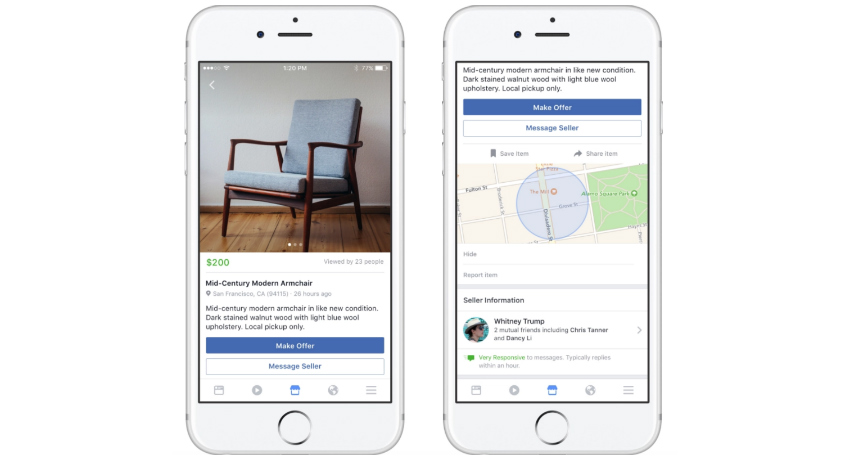Facebook Marketplace POV
January 8, 2018Background
Facebook launched Marketplace in 2016 as a place for people to discover, buy, and sell items with a geolocation filter (in a fashion similar to Craigslist). On January 16, 2018, the platform will begin to roll out the ability for U.S. advertisers to extend conversion and traffic-based campaigns on mobile to Marketplace, where people are already browsing products.
Details
Campaigns with conversion or traffic-based objectives, as well as those using the catalog sales objective, will have the option to run single-image or carousel ads using the Marketplace placement. This requires the ads to use the “Shop Now” call-to-action button. While ads may link to an app as the destination, app install ads will not be supported at rollout.
At launch, this additional inventory must be bundled with Newsfeed inventory, as Facebook will algorithmically place ads between the two. New campaigns with the above qualifications will be automatically opted in to Marketplace placements.
There is currently no option for category sub-placements within Marketplace; based on scale and results from the rollout, Facebook may explore options to provide more granular buys within Marketplace.
Clients who have low-quality dynamic ads catalogs or who regularly advertise items that violate Facebook’s commerce policies will be ineligible during the rollout.
The rollout will initially be U.S.-only, but may be extended to other markets over time.
Implications
Brands who want to take advantage of the new placement on existing campaigns will need to edit or duplicate to add Marketplace; otherwise legacy campaigns will continue to run as-is. For future campaigns, advertisers who do not want to run in Marketplace will need to manually opt out.
Contextually, campaigns could benefit from consumers who are already in a shopping mindset and more likely to click on ads featuring products. This could provide significant results over newsfeed placements and allow brands to target segments of their sales funnels more precisely on the platform.
With this change, Facebook has effectively created a separate environment on its platform to compete with the Pinterests, Craigslists, and eBays of the world. As with any new inventory, brands may benefit from the “first mover” effect of a large share of voice in a relatively small space. Assuming Marketplace inventory can scale, advertisers could also see reduced CPMs long-term. However, agencies should advise brands on smart product adjacencies—that is, a brand’s new widget will be shown alongside last year’s version of that widget being sold at half price by a user’s neighbor. Advertisers should strive to provide enough “wow” factor such that the campaign prompts a new purchase over re-sale. Similarly, for brands that have adjacency sensitivities (for example, luxury brands with competitive knockoffs available in Marketplace), agencies should advise caution.
Advertisers will be unable to buy, track or optimize Marketplace separate from other placements, which creates a “black hole” in the areas of performance transparency, forecasting, and optimization control. Until Marketplace is introduced as a standalone placement, it offers little to advertisers for replication of successful campaigns or optimization/learnings from unsuccessful campaigns.
Take Action
If you want to learn more about the changes to Facebook Marketplace or about Catalyst’s social offering, email us at info@catalystdigital.com.




